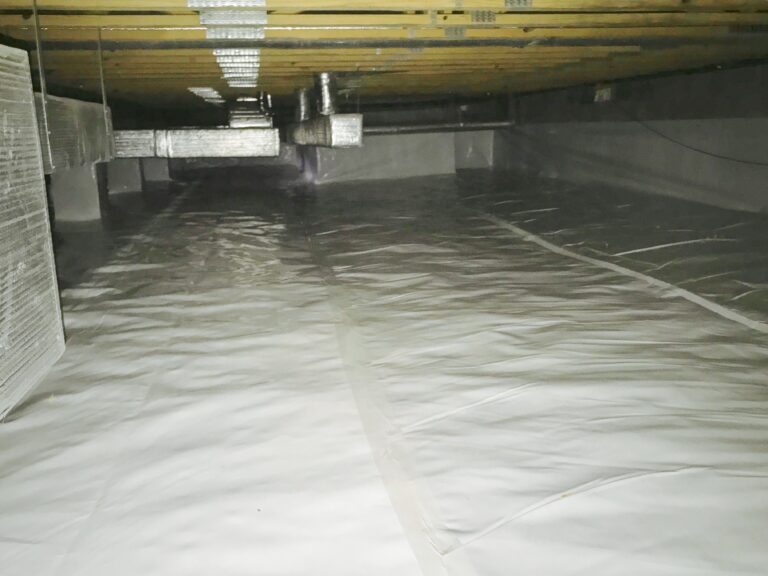The water in the crawl space is a very serious threat to the stability of any building. The water can seep into the foundation. You must be wondering why this is such a big problem for so many people. Well, it can cause a series of side effects which if not regulated in time will cause huge damage to the building in which the problem occurred.
As we all know, if there is a large amount of water indoors, and there is no chance that this amount of water will soak into the ground or dry out over time, moisture will form in that place, and some things will start to mold. Mold and moisture can do enormous damage to some of the materials that make up a home, such as wood or metal. Wood and metal, if left in a humid environment for a long time, can begin to decay. This will add to the extra cost of replacing them. To overcome this issue the water must be drawn immediately from the crawl space. The main causes of the accumulation of water in the crawl space are given below:
Causes
Water in the crawl space can come from different sources. The main causes are groundwater, rainwater, or plumbing leaks.
In many cases, it has also been observed that the blockage of gutters for long-duration also causes water accumulation in the crawl space. It is not only a threat to your environment, but it also leads to a very unpleasant smell. It is the first step to diagnose the cause of the water in the crawl space to stop further water from coming into space then you should remove the standing water. You can use different pumps to accomplish this task. The power of the pump depends upon the amount of water present in the space. After that, you can use your energy to rectify the issues like cracks.
1. How to locate a source of water?
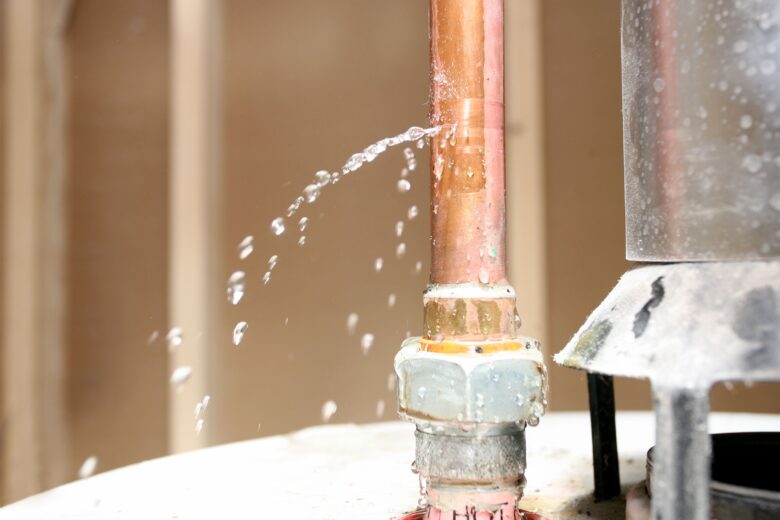
It is essential to locate the source of water in the crawl space. You should hire a plumber to locate the source of water and fix it. In 90% of cases, the source is the leakage in the plumbing fixtures. During the rainy season, the cause is most probably the rainwater that enters the crawl space. There could be many other reasons too.
2. How to dry out a wet crawl space?
Once you have removed the water from the crawl space, you must remove water from the crawl space. You can use a pump to remove water from the crawl space. The wood also soaks up a lot of moisture. You can use a dehumidifier to remove soaked up moisture from the wood. It is necessary for the stability of the building otherwise, the wet wood can cause severe damages to your building.
3. Vapor Barrier
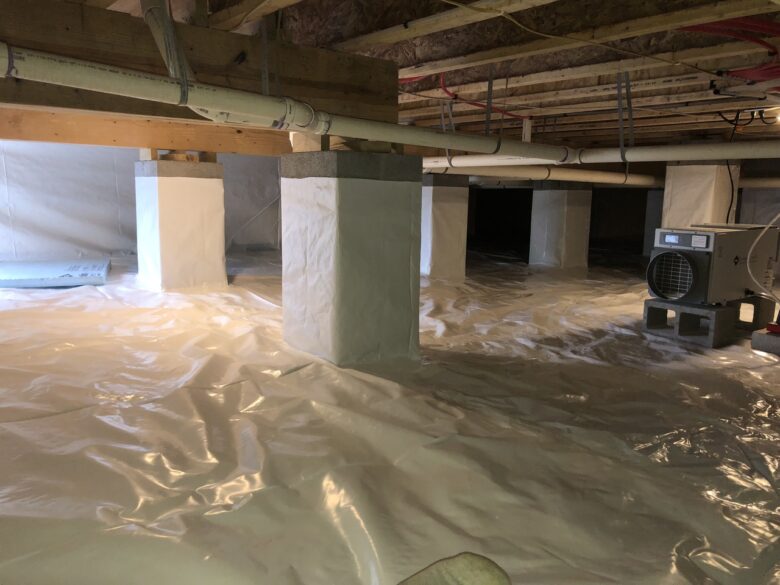
The second step is to remove the plastic vapor barrier in the crawl space. The vapor barrier is used to remove the vapors from the crawl space, but it becomes useless after the standing water in the crawl space. You should hire crawl space repair business in Marietta.
4. Dig the Trench
Dig a trench around the interior foundation of the crawl space. It should be 10 to 20 inches from the foundation. This trench should surround the house on at least three sides. And if you want this to work, you have to dig deeper than the level at which your crawl space or basement is so that all the water goes right into it. The next thing you need to do is get gravel and fill the bottom a little bit with it, but keep in mind that the beginning of the trench should be at a slightly higher level than its end which should be deeper. You will install a drainage pipe on the gravel, and you will fill the trench with more gravel on the pipe. This will stop the water from accumulating in the crawl space.
5. GFCI outlet
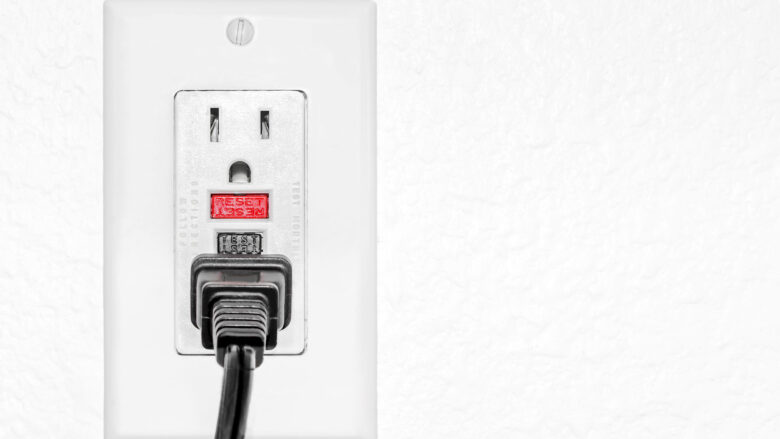
Contact an electrician and install a GFCI outlet in your crawl space to power the sump pump. This type of outlet is phenomenal for such situations, because its main purpose is in case of any interruption in the power supply, it is completely switched off so that no major problem occurs, no additional damage occurs and no harm occurs. This outlet is great for preventing electric shock.
6. Sump Pump
It is an intelligent pump that starts whenever the water collects in the trench. It will not allow the water to stand in your crawl space in the future. There are two types of pumps, those that are installed above ground which are called pedestal pumps, and those that are installed underground which are called submersible. Experts recommend that it is better to install than those that go underground because they are more functional. The positive side of these pumps is that you can use them for a period of more than 20 years, but it is advisable to get two in case one of them breaks down or fails to collect all the water that has accumulated in the room, the other would be like backups.
7. New Vapor Barrier
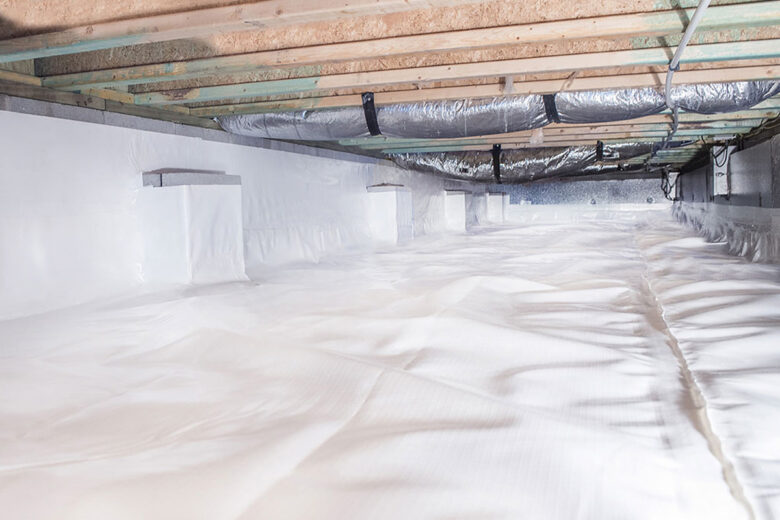
Install a new vapor barrier in your crawl space to avoid moisture in it.
Crawl space encapsulation is when foundation waterproofing specialists line the walls and floors of the space below your home with a thin polyethylene sheet. The total cost of crawl space encapsulation depends on the type of materials used and the professionalism of the company you choose. You’ll notice a price drop if contractors use cheaper and thinner crawl space liners.
8. Ventilation
Add new ventilation in your crawl space. Maintain the old ones. The ventilation is quite helpful. It will prevent the crawl space from a false smell. The vent will help the place to dry faster and will reduce the creation of moisture and mold in the space.
If you follow the tips above that will be of great importance to you to save your crawl space waterproof and have no additional problems. The weather can be unpredictable, even if you live in a place that is not prone to rainy weather, nature can surprise us and bring us torrential rains for which we were not ready in time. So prepare in time for such situations and keep the crawl space dry.

